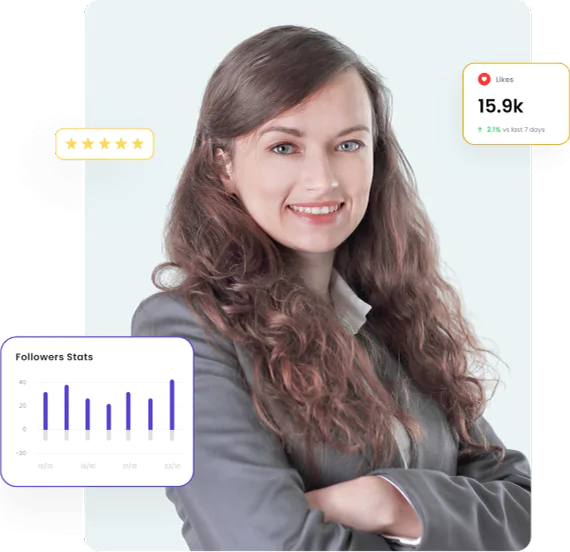AI Content Generator
Supercharge Your Social Media with our AI Content Generator
Say goodbye to writer’s block and hello to high-quality, ChatGPT-powered, engaging content that will drive traffic and increase engagement.






























Out of Post Ideas? Our AI Writing Assistant Has Got You!
Feeling stuck in a social media content rut? No worries, we’ve got your back! Our AI Writing assistant is here to help you break free from the mundane and inject some personality into your posts.
Forget uninspired content and say hello to a world of endless possibilities. Our AI Writing assistant will generate unique and engaging content that will keep your followers on their toes and wanting more.
So sit back, relax, and let our AI writing assistant do the heavy lifting. Whether you’re a social media guru or a newbie, our AI writing assistant will help you. It’s time to take your social media game to the next level!
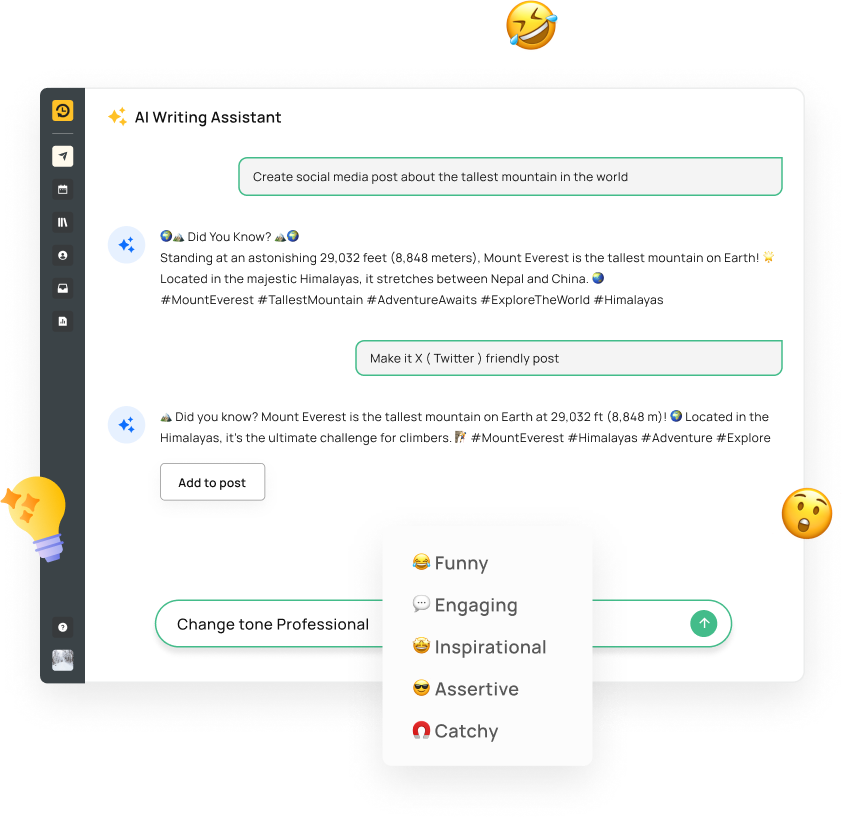
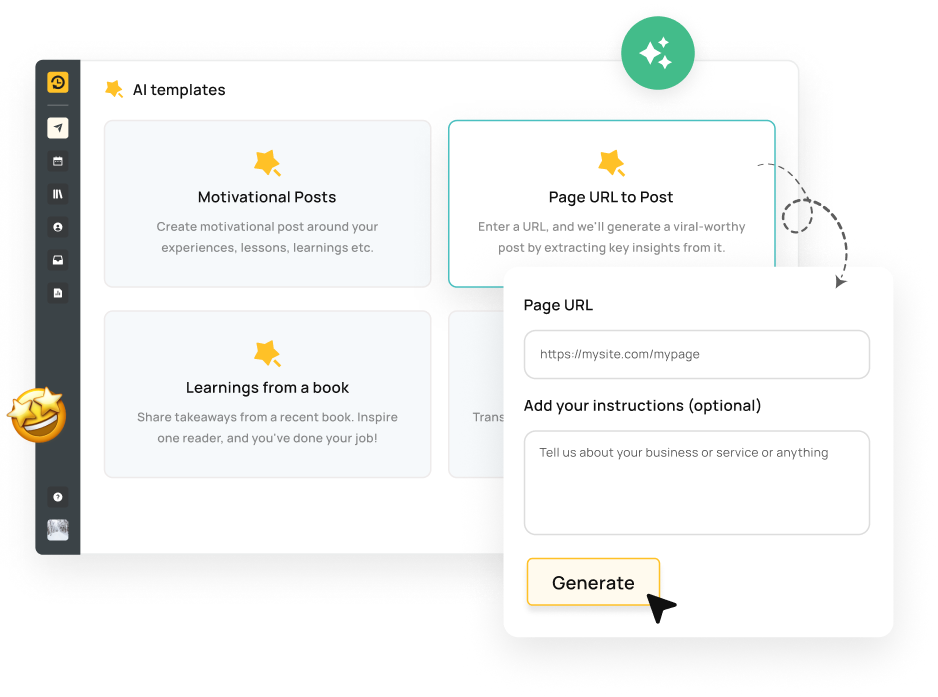
Create AI Content That Has The Ability to Go Viral
Tired of your social media posts falling flat? Our AI Templates are designed to help your content go viral.
Whether you’re sharing key learnings from a book or crafting a thought-leadership post, our templates ensure that every detail is optimized to grab attention and spread like wildfire. Don’t just create content—create content that has the potential to be the talk of the town.
With our AI Template tools, your posts will stand out, captivate your audience, and achieve the viral success you’ve been aiming for.
AI Content & Image Generation: A Match Made in RecurPost!
Searching for the perfect image to complement your AI-generated social media post? Look no further, because RecurPost now lets you do even more! With our AI-powered image generation, you can create custom visuals tailored to your post, right alongside our trusty stock image library.
From fun graphics to one-of-a-kind designs, our AI can whip up the perfect picture based on your ideas. Whether you’re after adorable animals or breathtaking views, just give it a prompt, and watch the magic happen.
So, go ahead and create your dream post with RecurPost’s winning combo of AI-generated content and custom images. Try it today and see the difference!
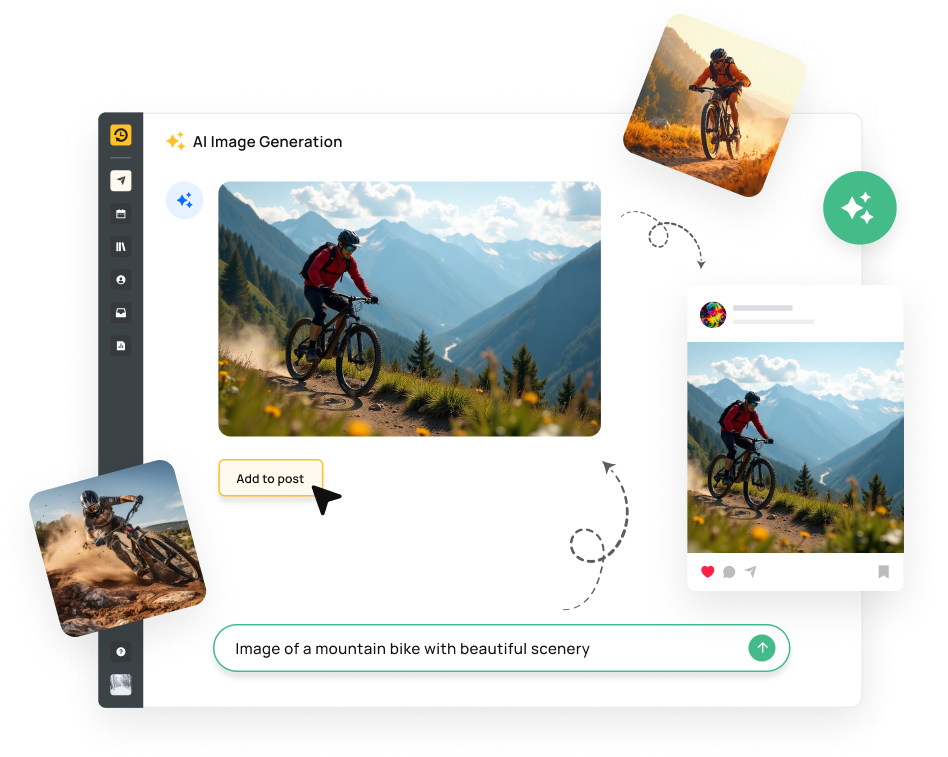

” RecurPost has revolutionized the way we promote our resources, offering capabilities we’ve never had before. After evaluating six other social media scheduling tools, RecurPost emerged as the clear leader. Their support team is exceptionally responsive and incredibly helpful, making our experience even more valuable. “
Jackson Calame
Business consultant
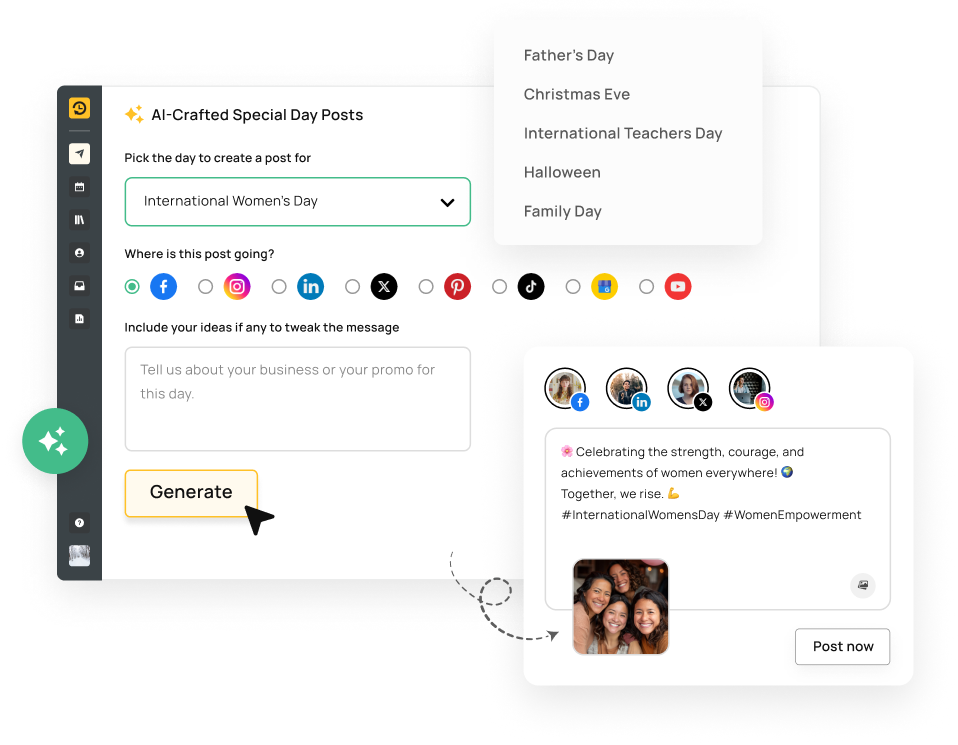
Boost Engagement with AI-Crafted Special Day Posts
Make every special day count with RecurPost’s AI-Crafted Special Day Posts.
This feature uses smart algorithms to create engaging and personalized content for events like Groundhog Day, International Women’s Day, World Sleep Day and Halloween. It ensures your posts are timely, relevant and tailored to resonate with your audience.
By automating the creation of these posts, you save time while maintaining a consistent and impactful social media presence. Drive more engagement by sharing content that connects with your followers on days that matter most.
Stay Ahead with AI-Powered Weekly Post Planning!
Tired of scrambling for fresh social media content every day? Say hello to Plan Weekly Posts with AI, your new social media sidekick that takes the stress out of content planning!
With this game-changing feature, you can schedule an entire week’s worth of posts in just a few clicks. No more last-minute rushes or creative blocks—just smooth, consistent, and engaging content all week long.
Simply select your social profiles, set your tone, define your audience, and let our AI do the heavy lifting. It’s like having a personalized content strategist right at your fingertips!
Social media scheduling has never been this easy (or this fun!).

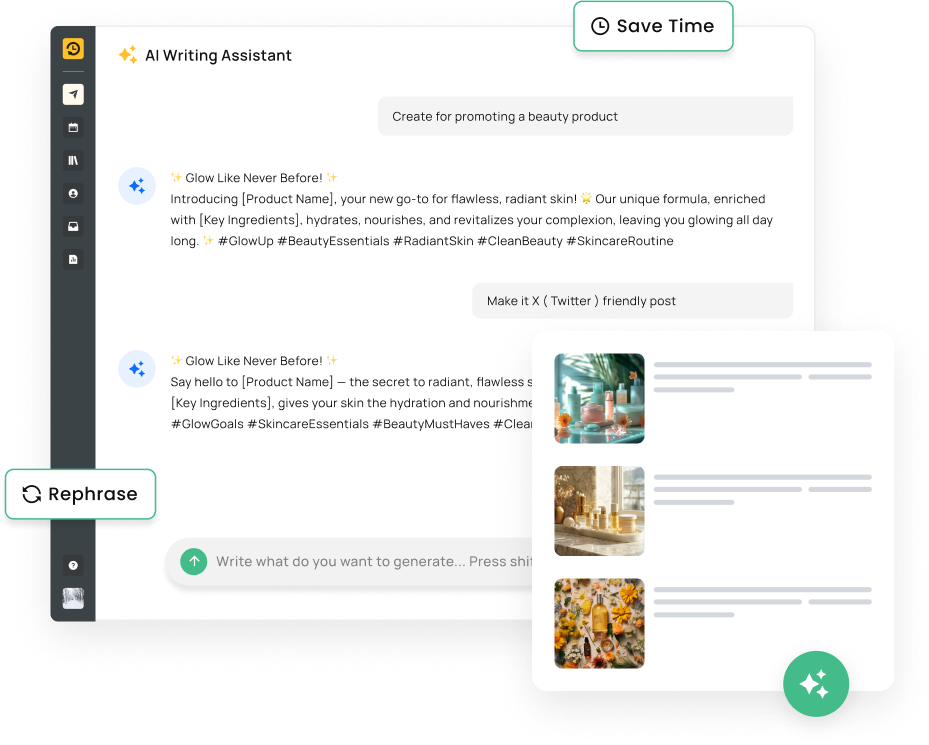
Work Smarter, Not Harder With Our AI Assistant
Are you tired of spending hours brainstorming social media post ideas, only to end up with a lackluster result? Do you wish you had more time to focus on other aspects of your business? Then it’s time to work smarter, not harder, with our trusty AI content generator!
Our AI content generation tool is designed to save you time and increase your productivity, so you can focus on the things that matter most. With just a few simple prompts, our AI technology will generate high-quality content that will leave your followers in awe.
Our AI assistant will help you create content faster than you can say ‘Recurlution’! So why wait? Take a break and grab a cup of coffee, while our AI assistant does the work for you. With RecurPost, working smarter has never been easier!
Frequently Asked Questions
How does RecurPost’s AI Assistant help with my social media content?
RecurPost’s AI Assistant streamlines your content creation process by generating high-quality posts, helping you maintain an active and engaging social media presence effortlessly.
What kind of ideas and content can the AI Writing Assistant generate for me?
The AI Writing Assistant can generate a variety of content, from social media posts and thought-leadership articles to personalized templates and special day posts, all tailored to your input.
Is the AI Assistant, including Special Day Posts and Templates, available to all RecurPost users?
Yes, all users can access the AI Assistant, including features like Special Day Posts and AI Templates, though the number of posts depends on your subscription plan.
Can I personalize the content generated by RecurPost’s AI Assistant to match my brand?
Absolutely! You can customize the content to fit your brand’s voice and messaging, ensuring it aligns perfectly with your objectives.
Do I need to provide detailed prompts, or can I keep it simple when using the AI Assistant?
You can keep it simple with short prompts, but the AI Assistant also allows for more detailed input if you want specific or nuanced content.
Experience the power of AI ✨
Over 100,000+ happy users and counting
Capterra
4.8 Star Rating
G2
4.6 Star Rating
Category Leaders
2023, 2024 Winners
GetApp
4.7 Star Rating
SaaSworthy
4.6 Star Rating
